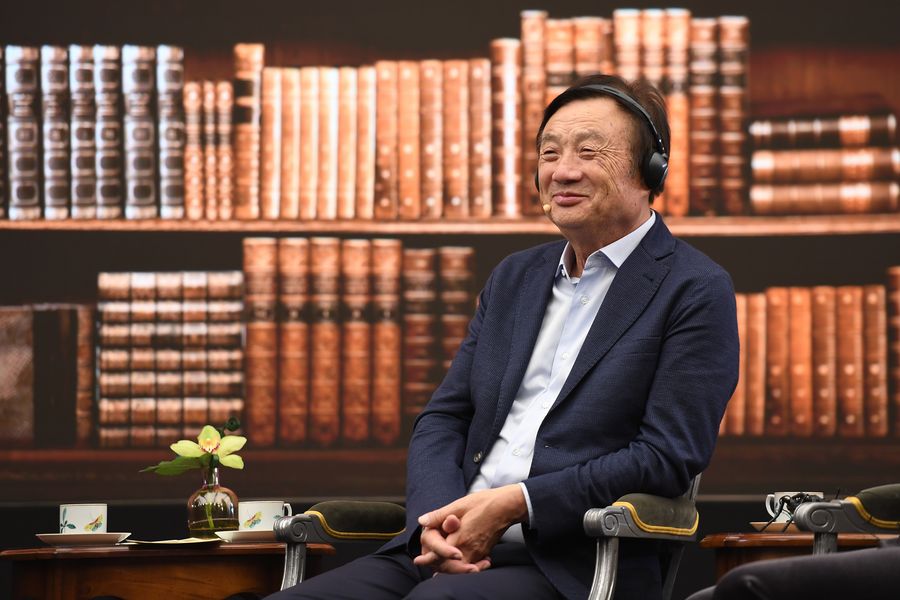
Huawei founder and CEO Ren Zhengfei attends a dialogue at the Huawei headquarters in Shenzhen, south China's Guangdong Province, June 17, 2019. (Xinhua/Liang Xu)
The real challenges come from spectrum, site resources and cross-sector collaboration, according to Huawei's Deputy Chairman, Ken Hu.
ZURICH, Oct. 15 (Xinhua) -- As the large-scale commercial development of 5G networks is much faster globally than 4G's rollout, and the new power of 5G applications inspires industries worldwide, certain real challenges must be properly addressed, the Chinese telecom giant Huawei said on Tuesday.
In his opening address at Huawei's 10th annual Mobile Broadband Forum here, the company's Deputy Chairman, Ken Hu, underlined the importance of favorable policies and cross-sector collaboration in speeding up the next stage of 5G development.
According to Hu, the real challenges come from spectrum, site resources and cross-sector collaboration.
The cost and availability of spectrum represent one of the most significant barriers that carriers face today, Hu said, urging governments to provide more spectrum resources to carriers and consider more flexible pricing models.
He recommended that governments start actively planning to meet new spectrum demand over the next five to ten years, noting that 6GHz spectrum bands are a good starting point.
Given the high cost and always insufficient availability of site resources, Hu called on regulators to open up more public infrastructure for sharing and provide guidance on site construction.

A Huawei's staff member (L) introduces a Mate 30 Pro smartphone to guests after a press conference hosted by Huawei in Munich, Germany, Sept. 19, 2019. (Xinhua/Lu Yang)
Last but not least, 5G challenges should be addressed by industries through expanding cross-sector cooperation and innovation, Hu said, citing Huawei's first 5G Joint Innovation Center in Europe, located in Zurich, in cooperation with Sunrise, a major Swiss telecommunications provider. It will serve as an innovation platform that helps European companies work together across sectors and develop industry-specific 5G solutions.
Statistics from Huawei show that carriers in more than 20 markets have launched a total of 40 commercial 5G networks so far, with more than 60 5G networks expected by the end of the year.
"We can't say for sure what type of applications we'll see in the future, but right now it's clear that every single industry will benefit from 5G technology," Hu said.
This year's Huawei Mobile Broadband Forum brings together more than 1,600 representatives from carriers, vertical industries, equipment manufacturers, standards organizations, analyst firms and the media.
In addition to a host of keynote speeches and discussions, the forum also features an exhibition of 5G technology, commercial solutions and a rich array of 5G applications for individual consumers, households and businesses. ■



